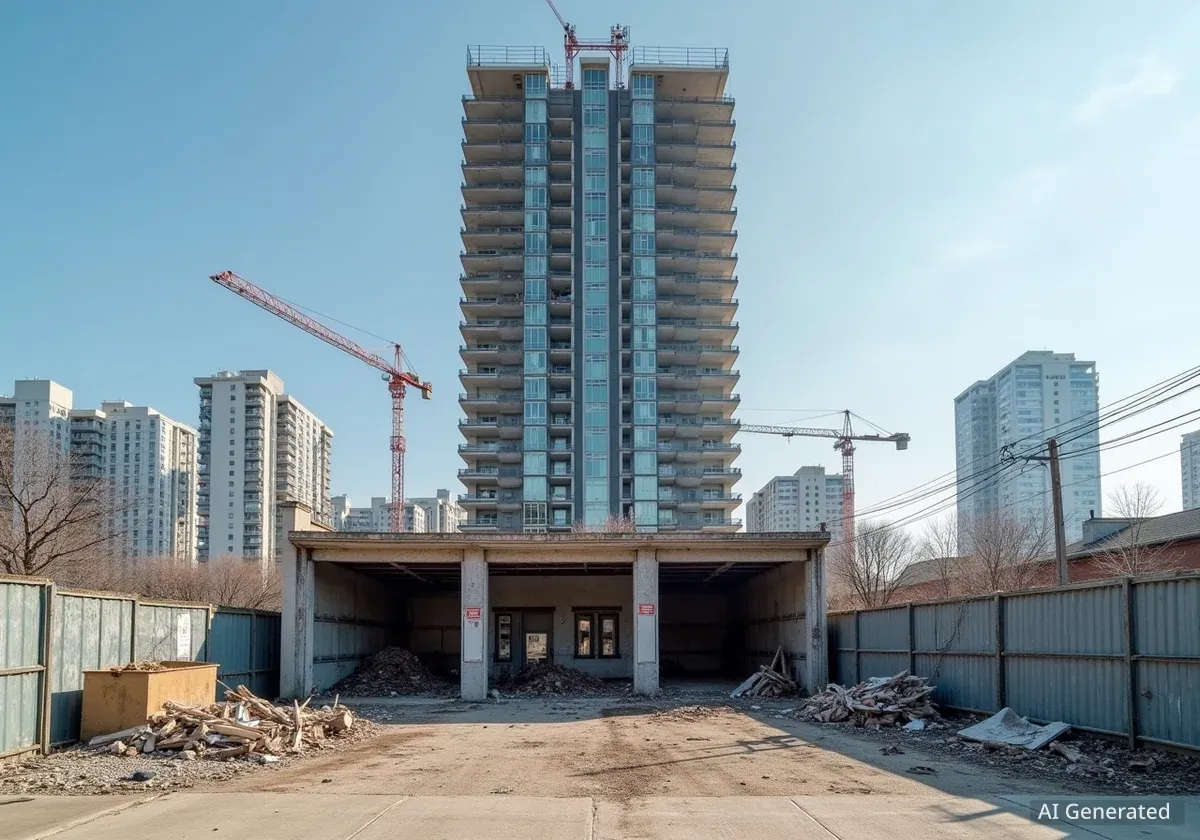The search for an apartment under $1,000 per month has become nearly impossible in most major American cities. New housing market analysis reveals that such affordable rentals are now concentrated in a small number of metropolitan areas, primarily located in the Midwest and the South.
For renters in expensive coastal markets, finding a place for less than four figures is a distant memory. However, in cities like Wichita, Kansas, more than half of the available rental listings still fall below this price point, highlighting a growing geographic divide in housing affordability across the United States.
Key Takeaways
- Only 13 of the 100 largest U.S. cities have more than one-third of their rental inventory priced below $1,000 per month.
- Wichita, Kansas, leads the nation in affordability, with 54% of its rental listings available for under $1,000.
- Cities in the Midwest and South, including Toledo, Ohio, and McAllen, Texas, dominate the list of most affordable rental markets.
- Major coastal cities like Boston and Miami have fewer than 2% of their rental units available for under $1,000.
- The high cost of rent impacts long-term financial goals, as saving for a home down payment can take the average renter nearly nine years.
The Shrinking Map of Affordable Rentals
As housing costs continue to outpace income growth nationwide, the number of cities where renters can comfortably find a home for under $1,000 is dwindling. A comprehensive review of the country's 100 largest metropolitan areas shows a stark reality: only a handful of locations still offer a substantial stock of budget-friendly apartments.
The data indicates that these affordable havens are almost exclusively found away from the coasts. The Midwest and the South have maintained their reputation for lower living costs, offering a significant contrast to the expensive rental landscapes of the Northeast and the West Coast.
Midwestern and Southern Strongholds
Wichita, Kansas, stands out as the most accessible market for renters on a budget. An impressive 54% of the city's rental listings are priced below the $1,000 threshold. This makes it a unique outlier in the national housing market.
Following Wichita, several other cities in these regions provide relief for cost-conscious tenants. The top five most affordable markets include:
- McAllen, Texas: This southern border city has a robust inventory of low-cost rentals.
- Little Rock, Arkansas: The state capital offers a market where over 40% of apartments are under $1,000.
- Toledo, Ohio: Known for its industrial roots, Toledo provides affordable options for both apartments and single-family homes.
- Oklahoma City, Oklahoma: Another major metro where renters can find a significant number of listings below the key price point.
By the Numbers
In the most expensive markets, such as Boston, Miami, and Washington D.C., the percentage of rentals available for under $1,000 drops to a mere 1.7% or less. Charleston, South Carolina, another popular southern city, also shows very few affordable options.
The Impact on Homeownership Goals
The high cost of rent is not just a monthly financial strain; it has long-term consequences for wealth building. For many Americans, the primary obstacle to buying a home is saving for a down payment. When a large portion of income is dedicated to rent, saving becomes a significant challenge.
Current estimates show that a renter saving 5% of their income would need nearly nine years to accumulate a 10% down payment on a typically priced home. This lengthy timeline makes the dream of homeownership feel out of reach for many.
A Path to Buying a Home
Cities with lower rental costs can serve as incubators for future homeowners. By paying less in rent, residents in places like Wichita or Toledo have a greater opportunity to save money. This financial breathing room can dramatically shorten the time it takes to save for a down payment, making the transition from renting to owning a more attainable goal.
In these more affordable cities, the financial benefits extend beyond just apartments. Renters can often find entire single-family homes for lease for under $1,500 per month, a price that might only secure a small studio apartment in a major coastal city.
Exploring Alternative Rental Strategies
For those living in high-cost areas, finding an entire apartment for under $1,000 is often not a realistic option. However, alternative arrangements can provide some financial relief. The practice of renting a single room within a larger house or apartment is becoming increasingly common.
This strategy opens up possibilities even in expensive markets. Data shows that renting a single room for less than $1,000 is possible in 86 of the 100 largest metro areas. This includes cities like Seattle, where the median rent for a one-bedroom apartment far exceeds that amount.
"While having an apartment to yourself in California or New York might break the bank, finding a room for rent offers a viable path for those who need to live in these economic hubs without dedicating more than half their income to housing."
This trade-off—privacy for affordability—is one that a growing number of Americans are willing to make. It allows them to access job markets in major cities while still managing to keep housing costs in check.
A Divided Housing Landscape
The latest rental market data paints a clear picture of a divided America. On one side are the major economic centers on the coasts, where high demand and limited supply have pushed rental prices to historic highs. In these areas, affordability is a crisis that affects a broad segment of the population.
On the other side are the smaller and mid-sized cities of the heartland, where housing costs have remained more stable. These locations offer a different quality of life, where financial pressures from housing are less intense, and the path to goals like homeownership is more direct.
As remote work continues to offer flexibility for some employees, these affordable cities may become more attractive. The ability to earn a salary tied to a high-cost-of-living area while residing in a low-cost city could reshape demographic trends and bring new investment to these historically overlooked markets.





